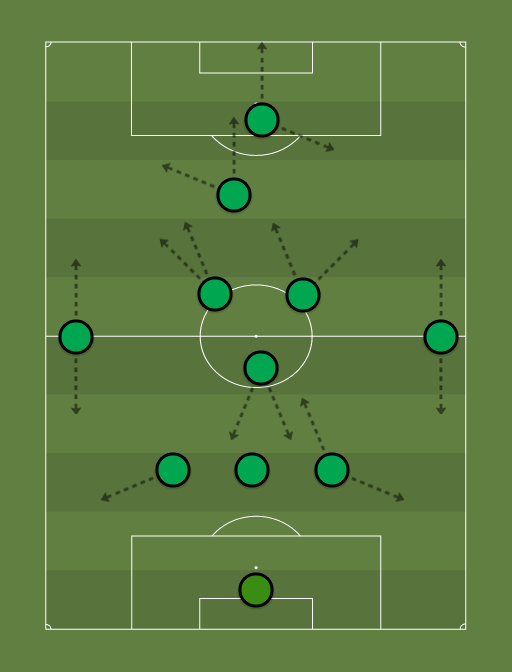M&B Refs (3-1-5-1) - V ADFA Refs - ShareMyTactics.com
Submitted on
Defensively: The back three are there to defend the area (width 10 yards either side of the post) and that shape is integral to the defensive strategy of the team. If one of the centre backs is forced wide to cover a wing back's area then the holding central midfielder drops in to ensure the gap is quickly plugged to retain this tight 3. In turn one of the other midfielder drops into the holding position with the "out of position" wing back slotting into the vacant midfield position. The midfielders will be matched up against an opponent in a like for like situation where they are up against 5 midfielders. If they are up against a 4-4-2 then one of the more attacking central midfielders becomes a "sweeper" that can assess the play and either fill any dangerous gaps or occupy gaps where they become a simple, swift bridge between the defence/midfield and the forwards to help facilitate the fast break. In the attacking third the defensive duties will depend upon the opponents formation. If they are playing a 3-5-2 then the two forwards will split to cover the 3. If it is a 4-4-2 then the "sweeper" from midfield will progress to cover one of the full backs with the number 10 picking up the other. If it is a 4-5-1 then the two forwards will split, however the communication between the wide players and their nearest defender will become key to the quick adaptation of the formation, especially as the ball moves from side to side. In attack the focus is freeing the number 10 to roam into the spaces and allowing the two most progressive midfielders to support the central forward quickly. Speed, creativity and the creation of space is at the heart of the attacking play.
